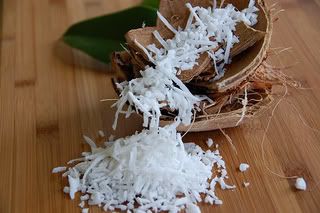There are several factors when considering an oil:
- Omega 6 / Omega 3 ratio - always watch out for that. You won't get to your Omega 3 quota from your frying oils anyway, but we could at least stay away from things like Safflower: 75% PUFA (poly-unsaturated fatty acid), almost all omega 6.
- PUFA's (were you paying attention? Poly-unsa) become rancid at high heat (see is frying bad for you? for a pretty good answer on the subject), generating trans-fat right in your pan. Yuck! So minimize the total amount of PUFA's and pay attention to the smoke point.
- As a corollary, look for an oil with a high amount of saturated and mono-unsaturated fat. Those are your friends.
- Last but not least: The source of the oil needs to be examined for nutritional value/toxins. Ever eaten a cottonseed? No, really! It is not intended for food!
Great. Now, let's look at that smoke point, using this wikipedia data as a base.
First thing to note: terms like virgin and unrefined sound great and will probably yield more flavor (and likely preserve more of the nutritional value), but they are the enemy of high heat cooking. Save those for salad dressings.
Next, our friends: saturated fat-based oils:
- Ghee seems to be the winner. Clarified butter, it is devoid of the solids that cause all the burning problems with butter, its enviable (by other oils, I presume!) smoke point is at 482F. You just can't go wrong with ghee. Check the label for purity and you are ready to roll.
- Lard has a substantial range based on its clarity, from 360 to as high as 420. Look for lard produced via the wet rendering process and avoid the stuff from the supermarket, opting in favor of small high quality operations. Your grass-fed producer is likely your top choice. Did you know, lard was used to produce French Fries for the first half of this century? I am tempted!
- Avocado oil (I've never heard of it till now!) is a win all around. 520F should be enough to satisfy almost any cooking need. The only oil that comes close is the nutritionally crooken safflower. Does it taste good? Have you tried it?
- Coconut oil. The refined kind goes as high as 450F. The virgin is only good for 350F. So be a little careful there.
Note this guide when frying something in a pan:450-500° high
375-400° medium-high
325-350° medium
275-300° medium-low
225-250° low
This means, don't let your virgin coconut oil in a pan that will go above medium heat.
The only oil I use outside of this family is olive oil. Its smoke point has a wide range based on the clarity of the oil: 375 for extra-virgin to 468 for extra light. It has a healthy nutritional profile and even boasts tiny amounts of Omega 3's if you enjoy conversations with your conscience.
Still, there is no longer a need for rancid vegetable oils to make your sweet potato fries.
The next step for me is to try them out and decide which tastes better for what purpose. My money is on ghee. After all, what adds flavor to food quite like butter?
I included the links to amazon for these oils. I have the olive oil on a regular subscription, have ordered the coconut oil in the past - and avocado is on the way!

